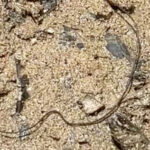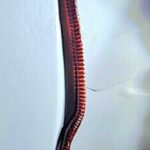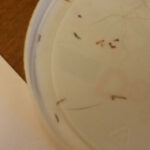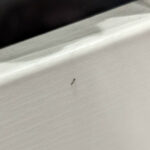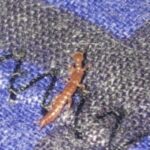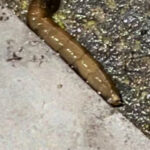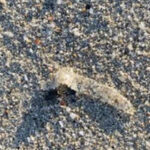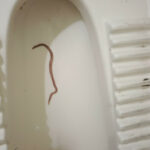Shipworms are one of 65 species of marine bivalve mollusks of the family Teredinidae. Bivalves have hardened, calcium-containing shells. The shell is divided into right and left halves. The two halves, or shells, are joined along the dorsal margin (back), by a horny hinge. When shipworms are feeding or relaxed, there is a gap between the two halves. When the animal is disturbed, strong muscles, which are attached to the shells, pulls the shells tightly together.
Shipworms typically live 1-3 years. Spawning occurs April-September or May-October depending on the region and climate. Spawning occurs in warmer weather. Individual worms are capable of producing 1-5 million larvae. The largest shipworm ever recorded was fond in the Baltic Sea. It was 30 cm in length
A number of bivalves burrow into the sand or mud, but shipworms spend their lives in submerged wood from active or sunken ships and other wood objects. Shipworm halves have been modified to act as a drill, enabling the wormlike body to penetrate wood pilings and ships’ hulls.
Shipworms can cause a significant amount of damage to ships. As the shipworm grows, it lengthens its burrow, lining it with a calcareous (calcium) layer secreted by the mantle. Teredo includes about 15 species and it is the most damaging of all shipworms. It can be found along the coasts of Europe and dos the most damage on the Baltic Sea Coast.
According to ScienceDaily.com, around 100 wrecks are infested in the Southern Baltic, but the infestation has not spread past Falsterbo. Methods have been developed to protect shipwrecks, such as covering them with geotextile and bottom sediment, or trying to predict to which areas the shipworm is likely to spread in the future. Researchers say there are some 100,000 well-preserved shipwrecks in the Baltic Sea.
Sources
“Shipworm.” Encyclopædia Britannica. 2010. Encyclopædia Britannica Online. 01 Nov. 2010 http://www.britannica.com/EBchecked/topic/541023/shipworm.
“Shipworm Threatens Archaelogical Treasures.” Science Daily. 2010. Science Daily Online. 01 Nov. 2010 http://www.sciencedaily.com/releases/2010/01/100113105737.htm.
All About Worms is always free, always reader-supported. Your tips via CashApp, Venmo, or Paypal are appreciated! Receipts will come from ISIPP Publishing.



